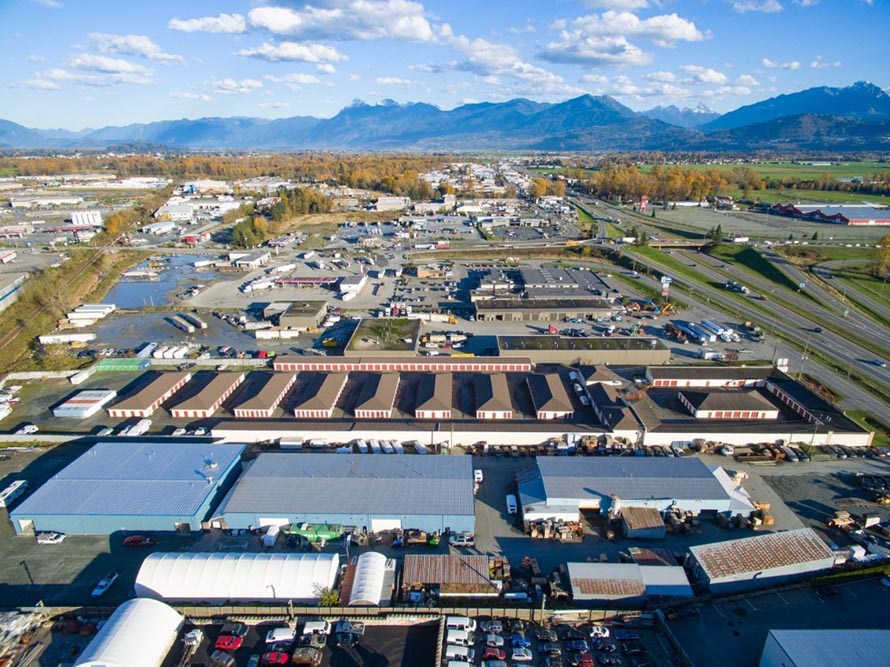The three First Nation bands that now own 90 acres of prime real estate in Vancouver’s Point Grey – where an acre of land can costs north of $20 million – have not released plans for the site.
The Musqueam, Squamish and Tsleil-Waututh nations paid a total of $717 million for the land, teaming with Canada Lands Co. to purchase the first 52 acres from the federal government in 2014.
As there are existing leases on parts of the site, it is not expected any plans will be announced until 2020.
But, as in Vancouver’s white-hot residential sector, First Nations are also the gatekeepers for scarce suburban industrial land, which has crested above $1.5 million per acre.
The shortage of industrial land is even acute at the foot of Mount Cheam, where Chilliwack Mayor Sharon Gaetz sees opportunities to partner with Indigenous communities to boost the city’s industrial land base.
A total of 11 bands comprise the area’s Sto:lo peoples. While none has received a formal proposal from the city yet, not all are closed to the prospect.
Chilliwack’s total industrial inventory is 1,295 acres and, of this, approximately 150 acres remain vacant. There’s even less in Sto:lo communities, where commercial and residential development predominates, but David Jimmie, chief of Squiala First Nation and the Sto:lo Nation Chiefs Council, sees opportunity.
“When we look at what’s left as far as industrially zoned properties, we’re maxed out,” he said of the eastern Fraser Valley. “So the logical next step is to look at First Nations land to see if there’s opportunities there.”
Squiala has approximately 300,000 square feet of retail space in its Eagle Landing development that’s home to a Walmart and a Home Depot.
“We’ve been able to leverage the location and develop, and generate some revenue for it,” Jimmie said. “We’re always looking to explore what opportunities we can advance on our people’s behalf.”
Having a land code is key for native bands considering real estate development opportunities, because it reduces the federal government’s involvement when development starts. It also provides members certainty about what’s allowed on their land and terms of reference for partners.
The majority of Sto:lo communities have or are developing land codes, which makes them particularly attractive partners, said Brian Coombes, president of Chilliwack Economic Partners Corp., the city-owned entity that oversees economic development for the city.
“There’s a lot of them that have land codes, which is an exciting first step,” Coombes said. “[It] gives them more control in terms of their own planning of their communities.”
The codes are reviewed regularly and updated to reflect economic planning and community feedback.
“We are hopeful that in that planning process there are industrial opportunities that come out of it,” Coombes said. “The need for more employment lands is tremendous.”
To create large industrial parks on First Nations land in Chilliwack, various details such as land use, servicing agreements of water and sewer services and the like would need to be worked out.
Tzeachten First Nation is not a developer, said James Atebe, the community’s general manager. The majority of land is in members’ hands, and what development has occurred is largely residential and commercial.
However, Tzeachten is reviewing its land-use policies, and that could open the door.
An example of how things could play out already exists at Tsawwassen First Nation next door to Delta, which continues to have servicing agreements while functioning as a self-governing municipal entity within Metro Vancouver under the terms of its treaty.
TFN Economic Development Corp. has 300 acres of industrial land available for development, nearly 100 acres of which is under development. GWL Realty Advisors Inc. is developing the largest portion, 57 acres, on behalf of Healthcare of Ontario Pension Plan.
“First Nations have [land], and having them work with the private sector achieves a lot of benefits both economically for the industry as well as achieves objectives for the First Nations,” said Geoff Heu, vice-president of development for Western Canada with GWL.



